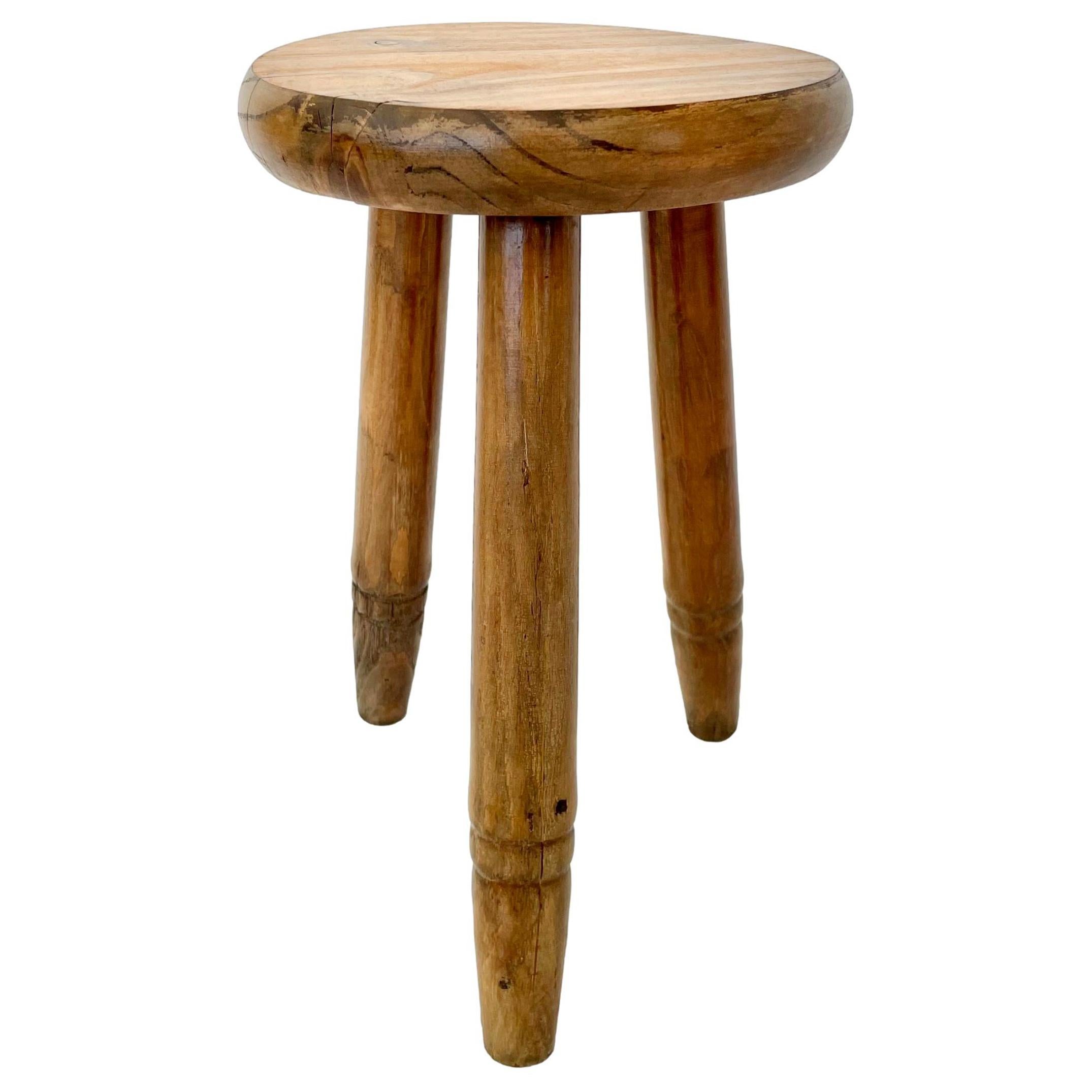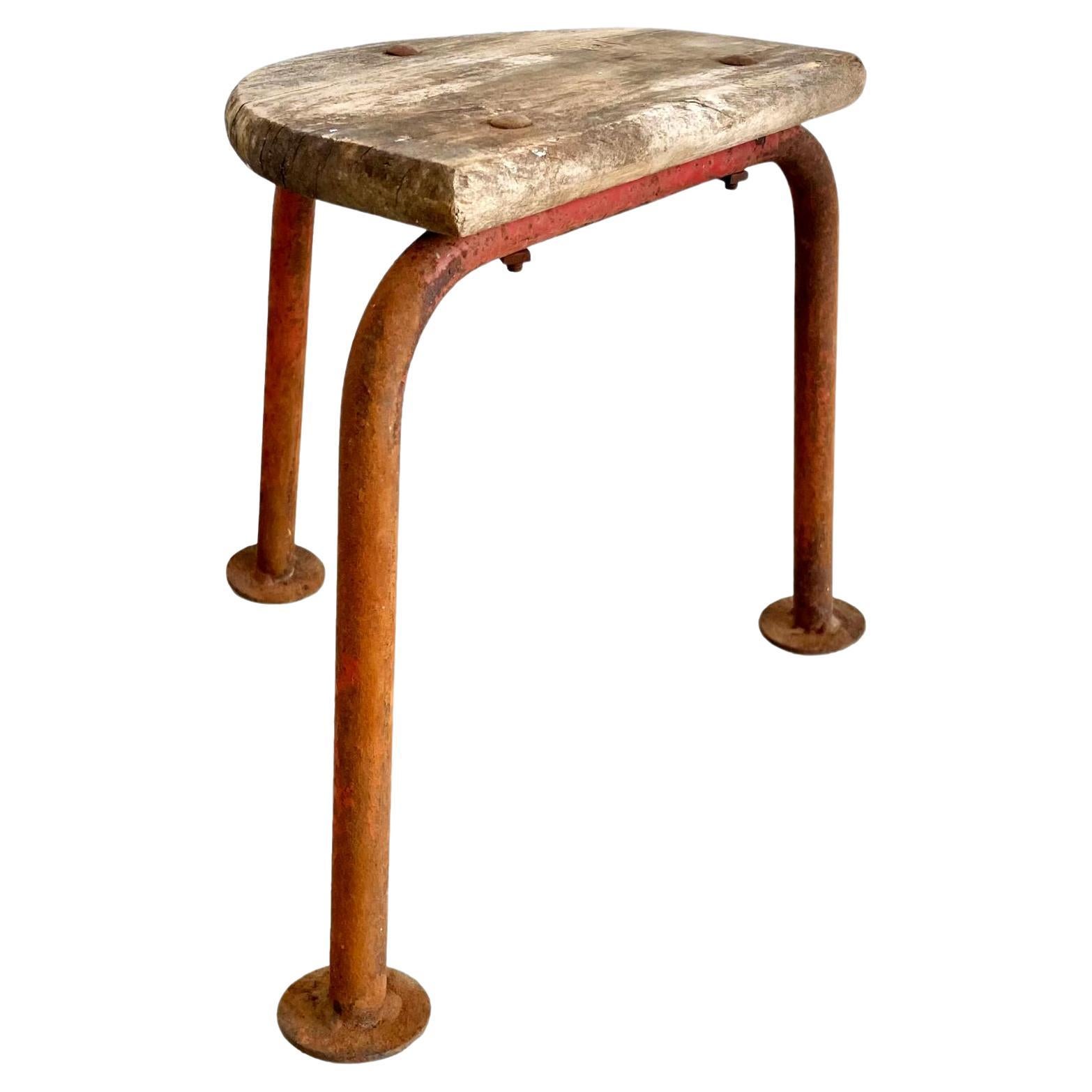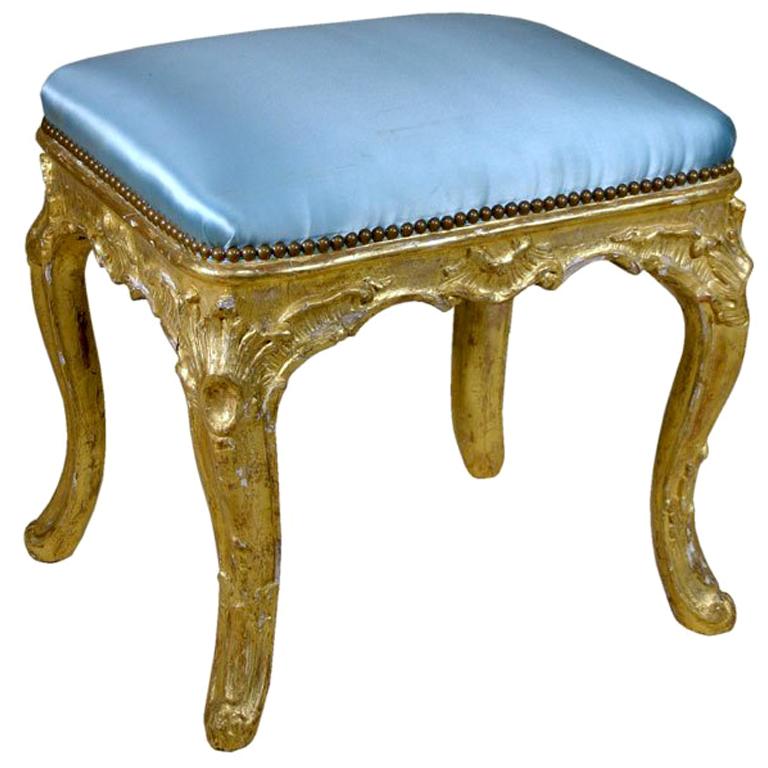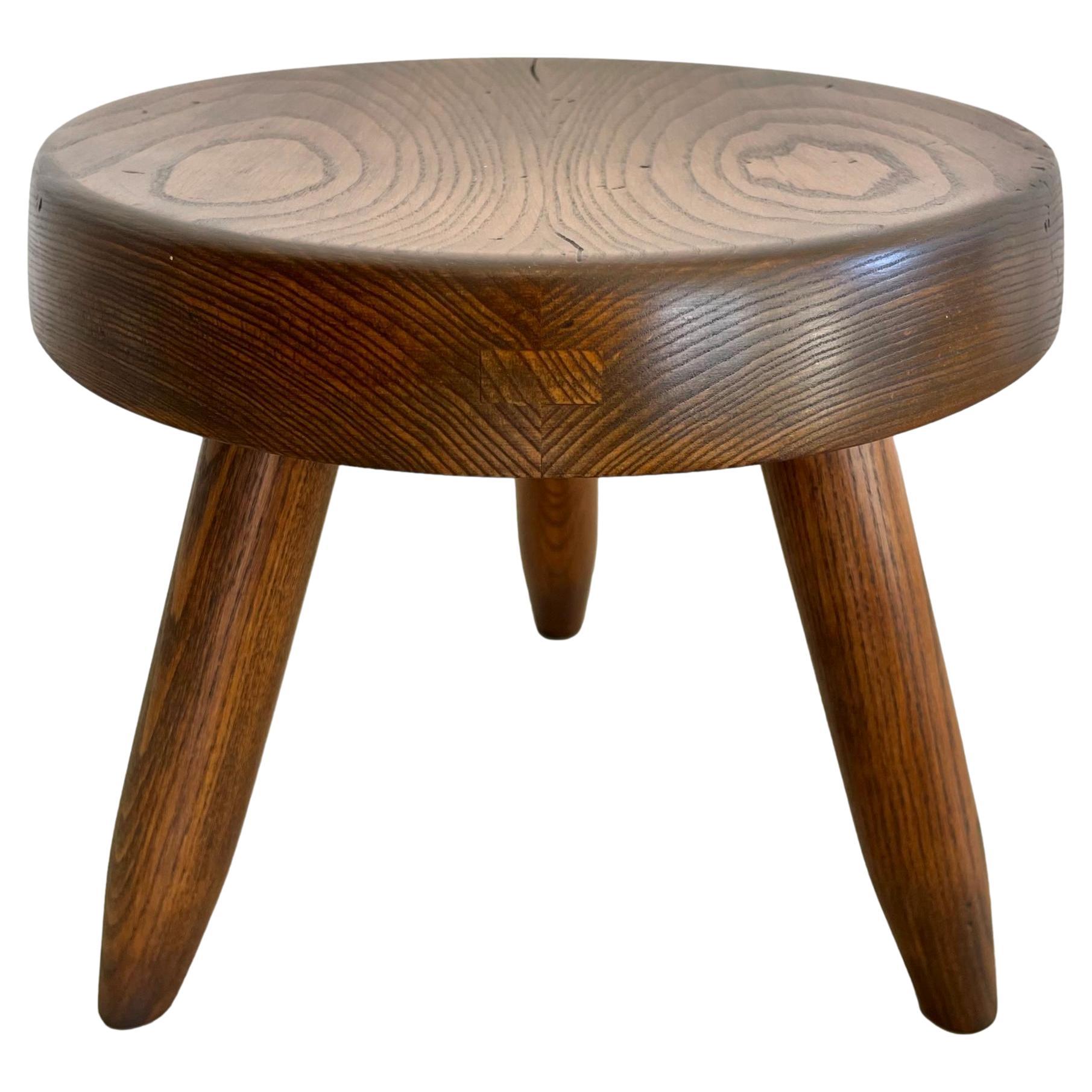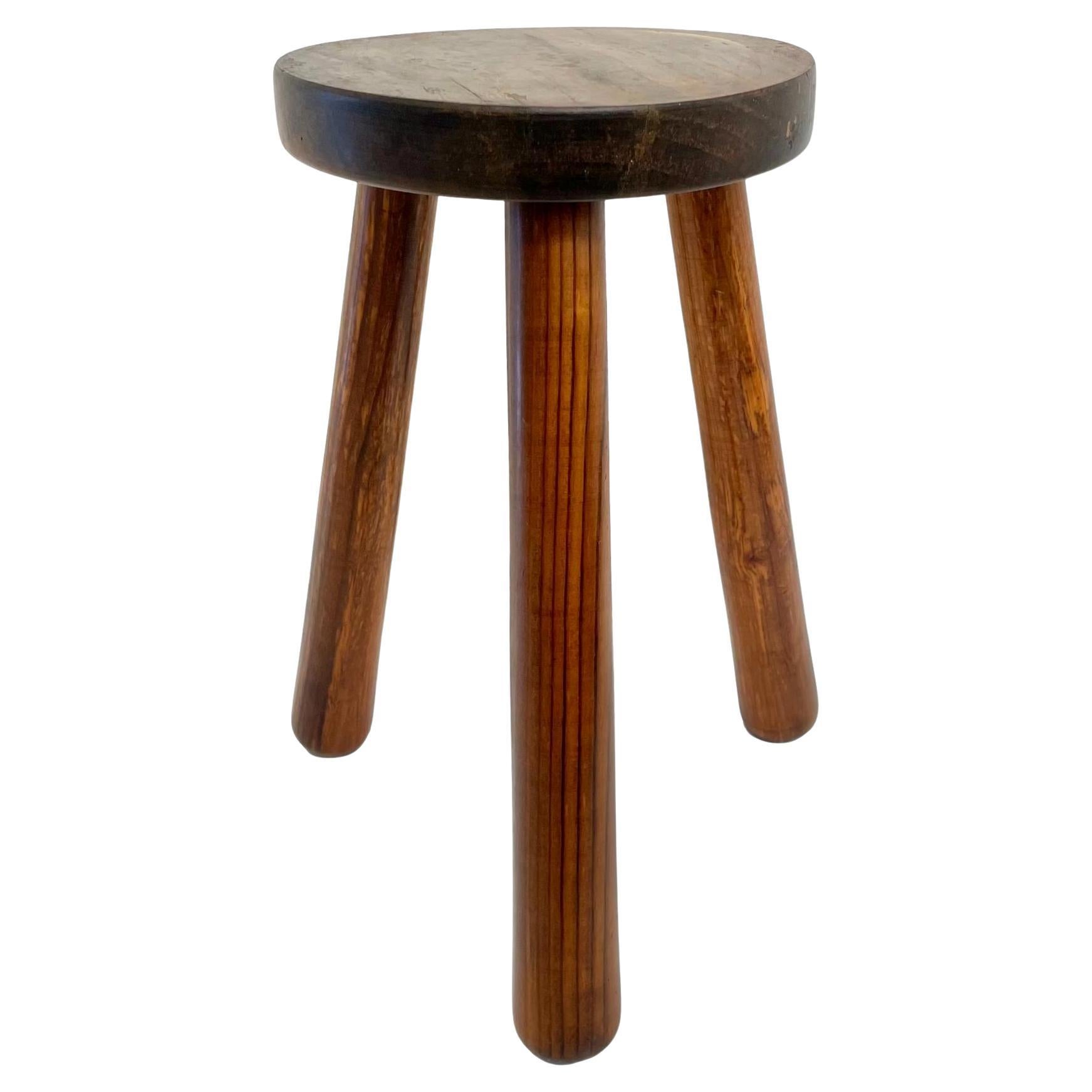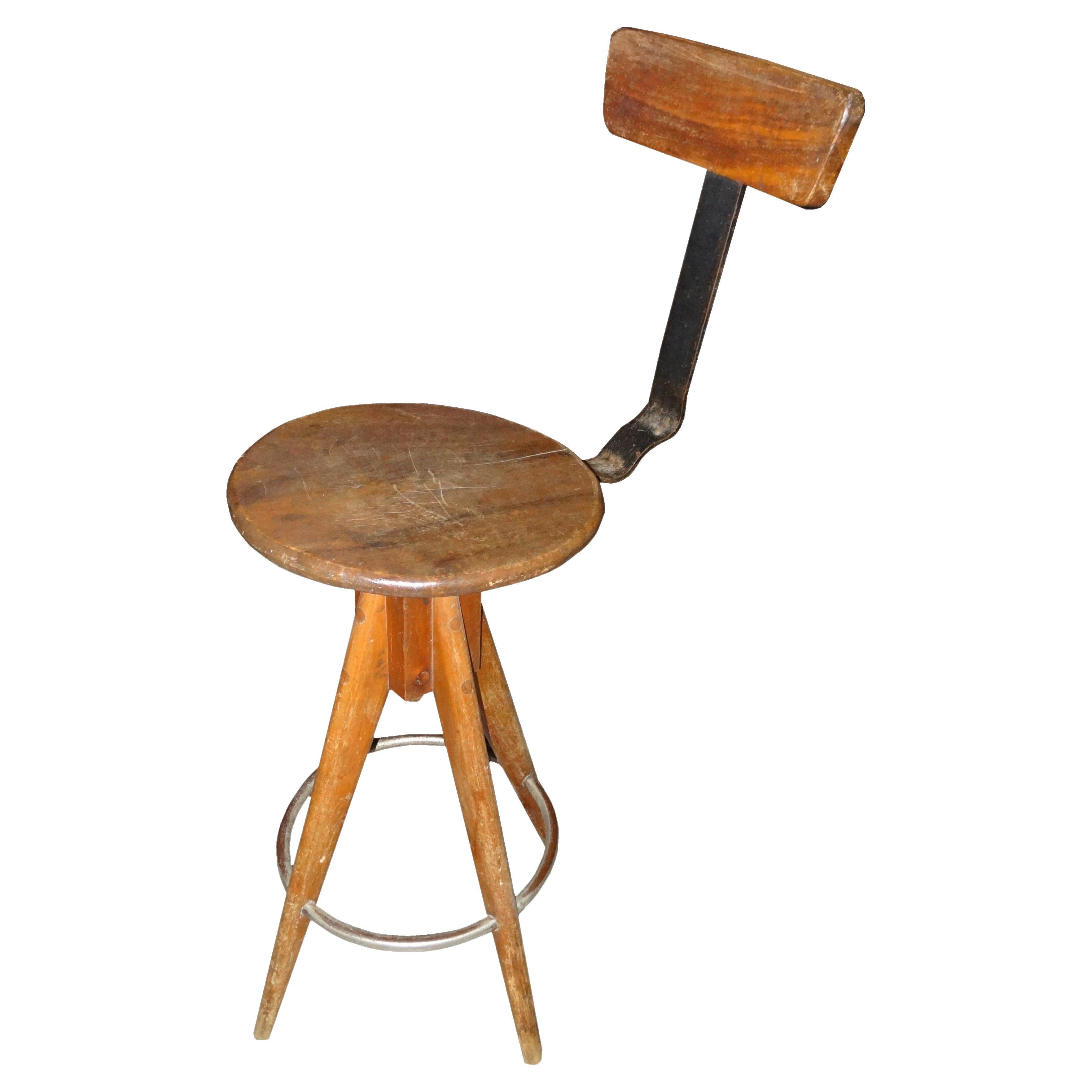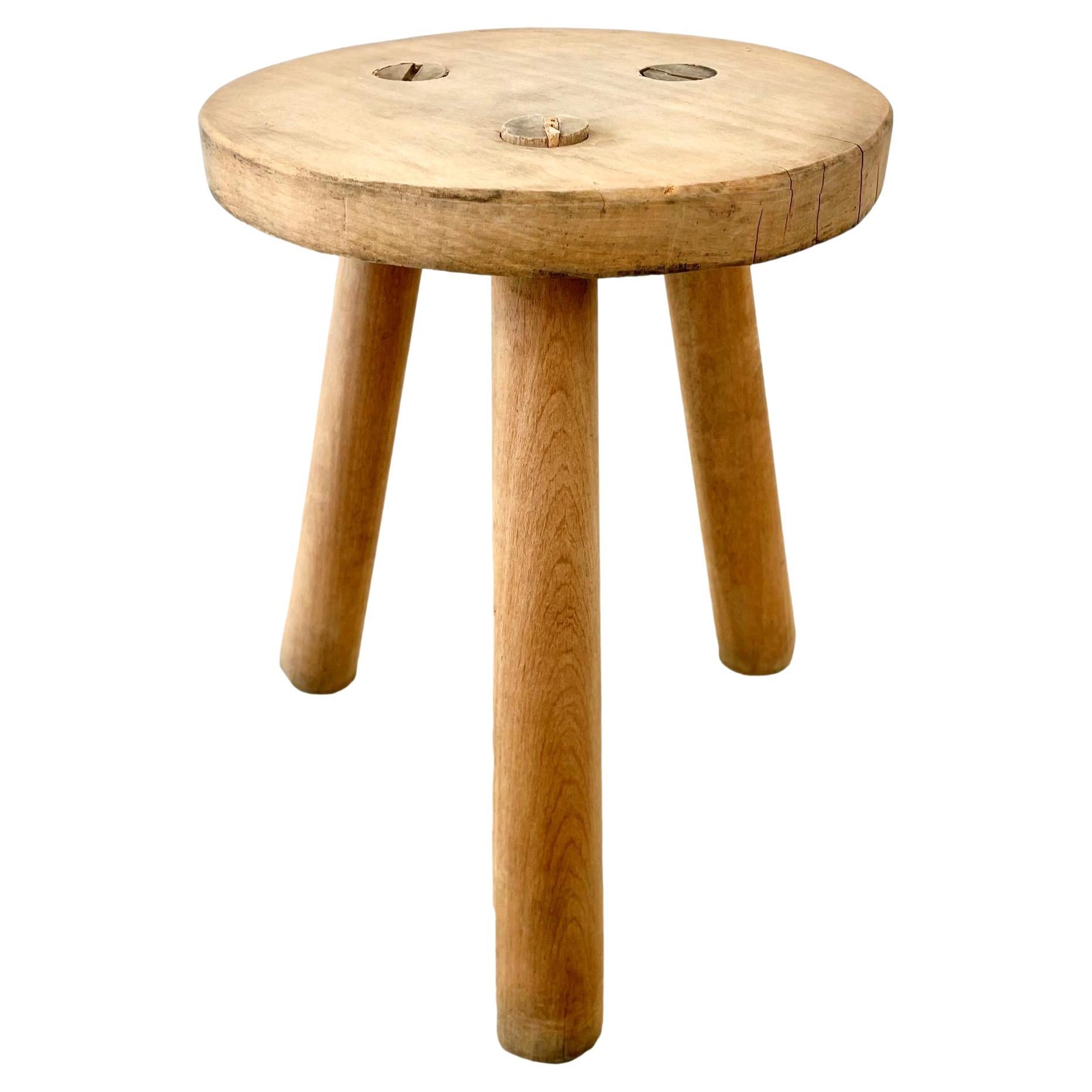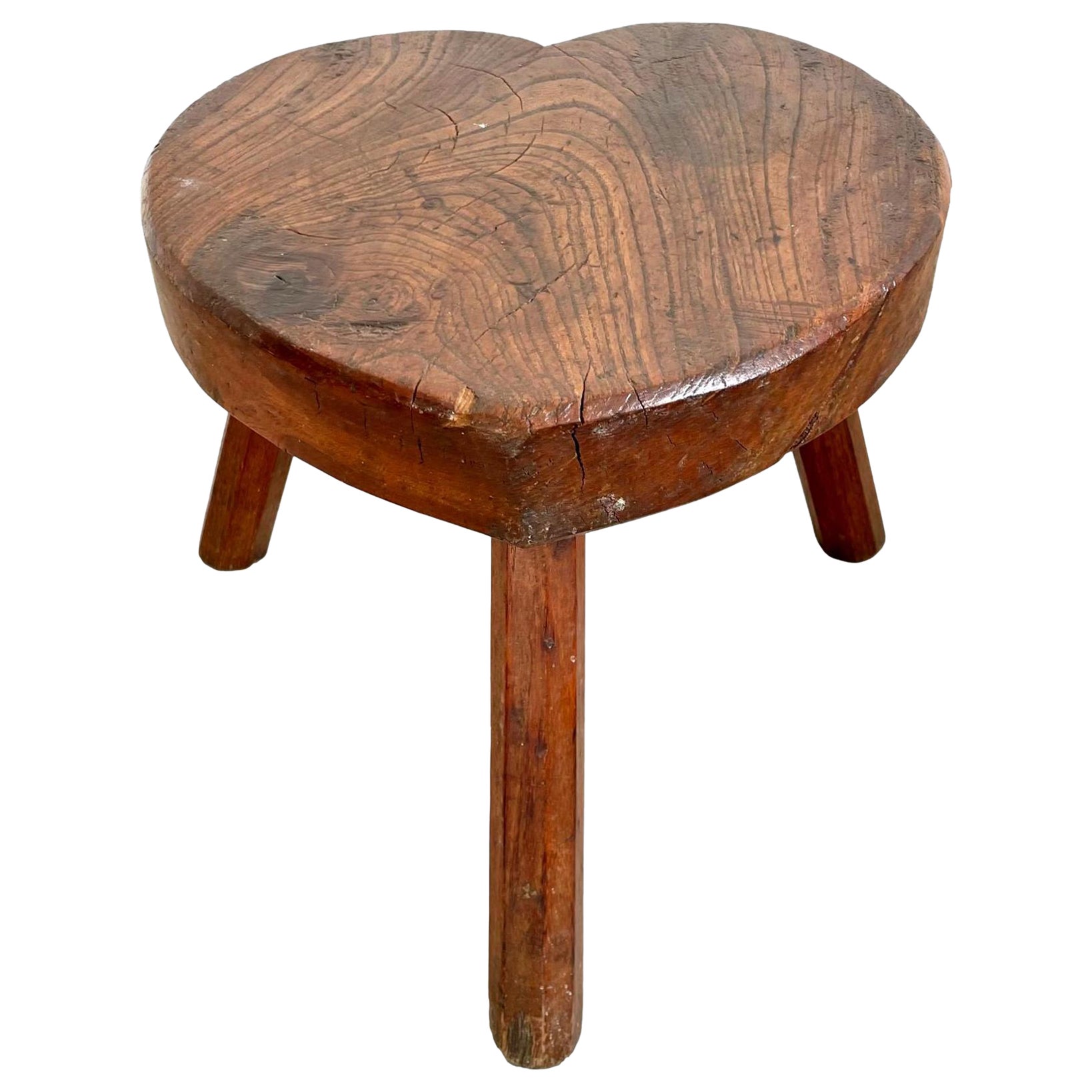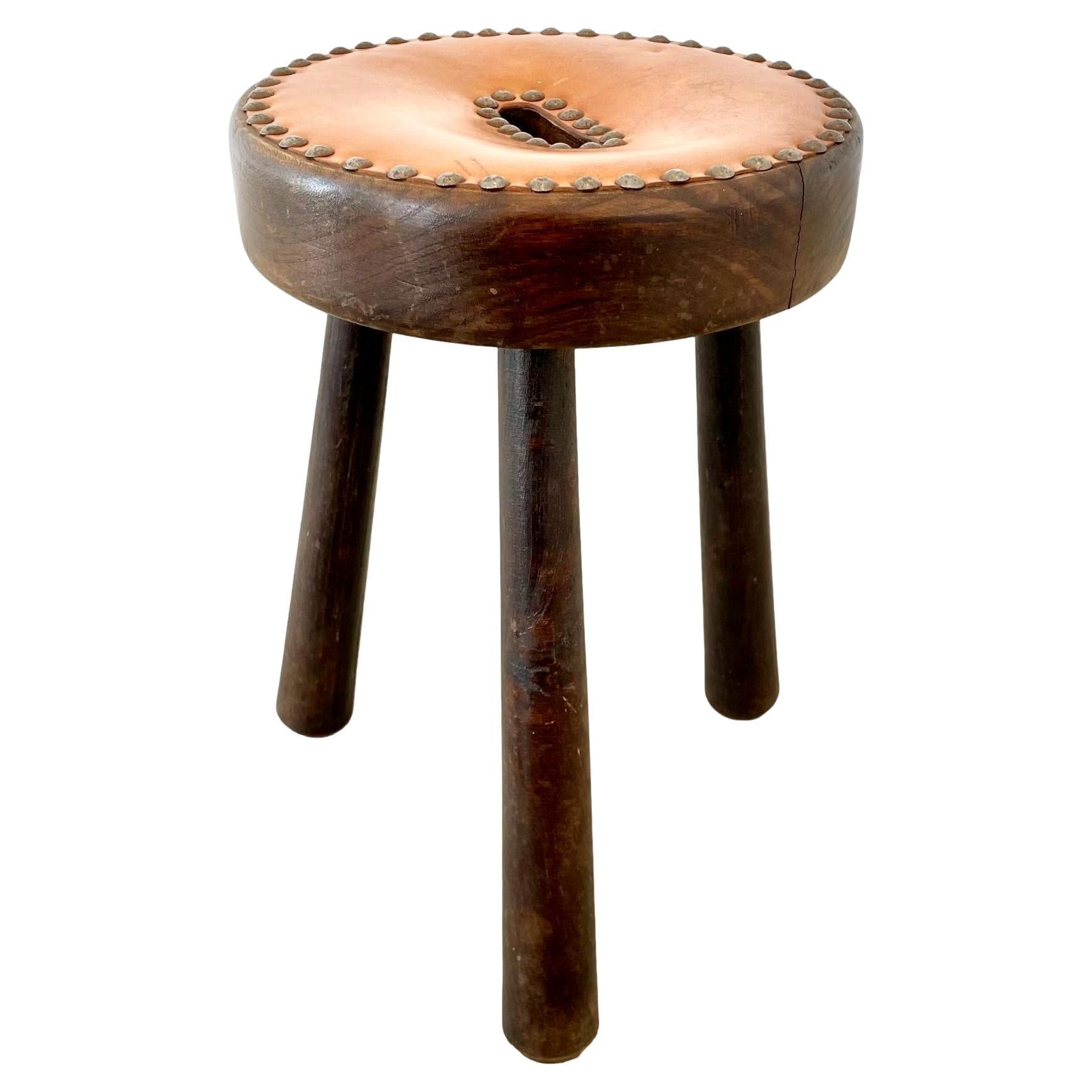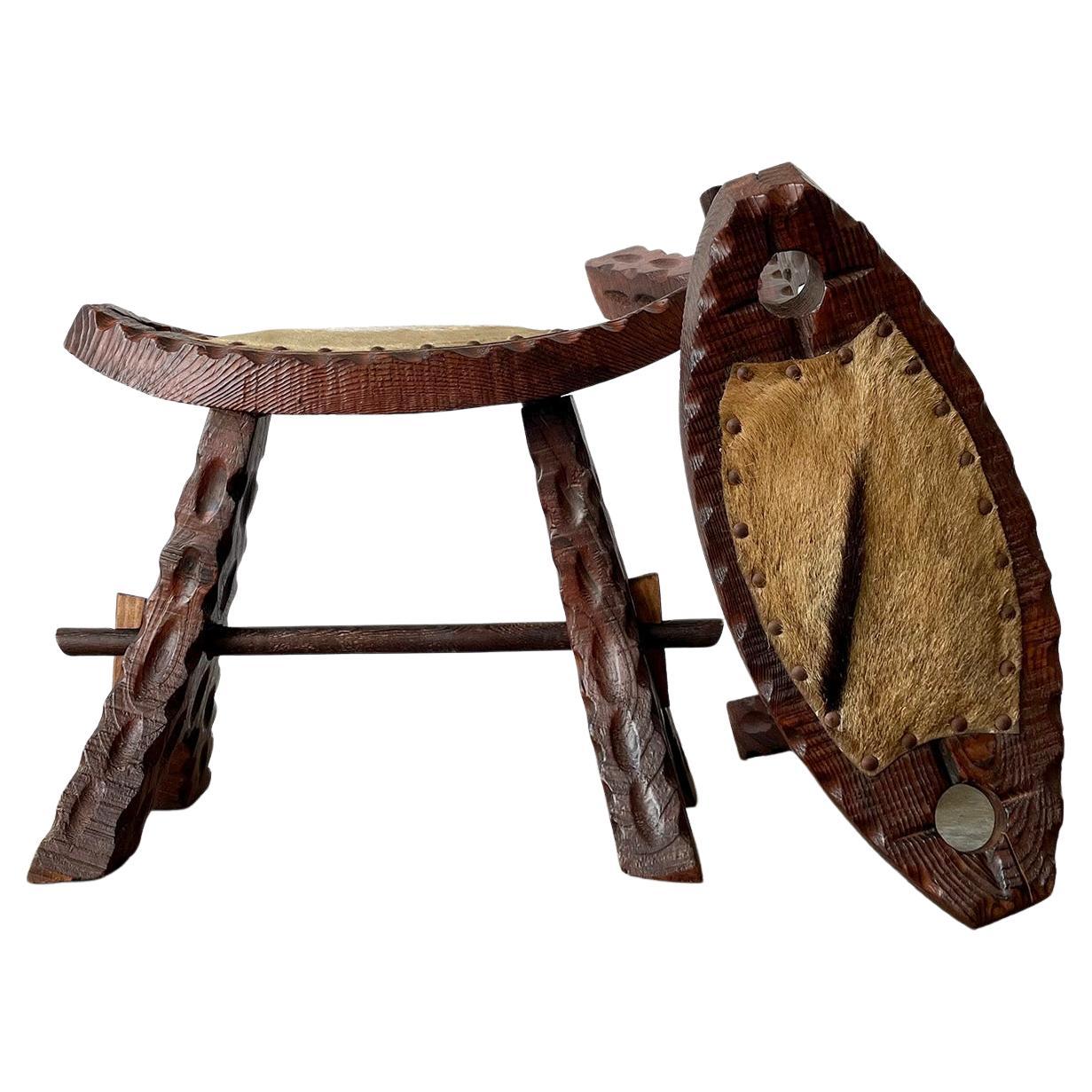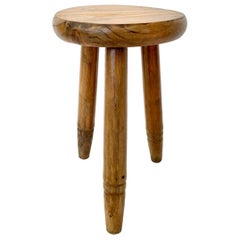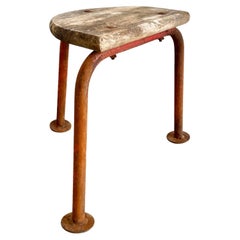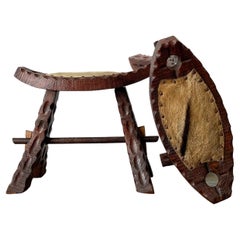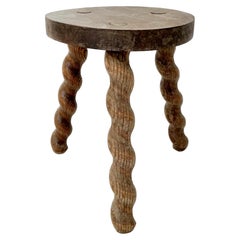
French Spiral Stool
View Similar Items
Want more images or videos?
Request additional images or videos from the seller
1 of 8
French Spiral Stool
About the Item
- Dimensions:Height: 12 in (30.48 cm)Diameter: 12 in (30.48 cm)Seat Height: 12.25 in (31.12 cm)
- Materials and Techniques:
- Place of Origin:
- Period:
- Date of Manufacture:1950s
- Condition:Wear consistent with age and use.
- Seller Location:Los Angeles, CA
- Reference Number:1stDibs: LU1853324971902
About the Seller
5.0
Vetted Seller
These experienced sellers undergo a comprehensive evaluation by our team of in-house experts.
Established in 2016
1stDibs seller since 2016
1,112 sales on 1stDibs
More From This SellerView All
- French Wooden Tripod StoolLocated in Los Angeles, CAVintage wooden stool made in France, circa 1950s. Thick seat and tripod legs with ribs that taper near the bottom. No nails or hardware. Great lin...Category
Vintage 1950s French Stools
MaterialsWood
- French Industrial Stool, 1950sLocated in Los Angeles, CATripod wooden stool, made in France, circa 1950s. Thick wood seat with three rounded metal legs. Great lines and shape. Petite stool with a lot of ...Category
Vintage 1950s French Stools
MaterialsMetal
- French Cowhide and Wood Stool, 1960s FranceLocated in Los Angeles, CAUnique 4 legged stool made in France, circa 1960s. Substantial and chunky round seat covered in a cushion and thick cowhide with spotted fur ranging from c...Category
Vintage 1960s French Brutalist Stools
MaterialsLeather, Wood, Cowhide
- Wood Tripod Stool, 1960s FranceLocated in Los Angeles, CAMinimalist wooden tripod stool made in France, circa 1960s. Substantial and chunky, this stool has 3 club legs that screw into base. Raw grain to the wood which gives the piece nice ...Category
Vintage 1960s French Brutalist Stools
MaterialsWood
- Brutalist Tripod Wood Stool, 1970s FranceLocated in Los Angeles, CABeautiful 3 legged stool made in France, circa 1960s. Round seat held up by three sturdy wooden legs that are screwed into metal anchors in the seat givi...Category
Vintage 1970s French Brutalist Stools
MaterialsWood
- Charlotte Perriand Berger Stool, 1950s FranceBy Charlotte PerriandLocated in Los Angeles, CACollectible Berger stool by Charlotte Perriand in an elegant dark finish. Circa 1950s. You can find this stool featured in the Charlotte Perriand complete works Volume 2.Category
Vintage 1950s French Stools
MaterialsWood
You May Also Like
- French Regence Giltwood StoolLocated in Sheffield, MAA French Regence giltwood stool. With some alterations. 18th century. Measures: Height 20 in. Width 19 in. Depth 16 in. Sto 16. $4,200.Category
Antique 18th Century and Earlier French Louis XV Footstools
- Stool in Wood, Country France, 1950Located in Ciudad Autónoma Buenos Aires, CStools. Material: iron and wood You want to live in the golden years, this is the stool that your project needs. We have specialized in the sale of Art Deco and Art Nouveau and Vin...Category
Vintage 1950s French Space Age Stools
MaterialsIron
- Pair of French Rustic Wood Chalet StoolsLocated in Los Angeles, CAPair of French rustic wood chalet stools France, early 20th century We believe these stools were handcrafted by someone with a deep appreciation and love for wood These heavy weight,...Category
Early 20th Century French Stools
MaterialsFur, Wood
$3,100 / set - Perriand Style Tripod Stool C1960s FranceBy Charlotte PerriandLocated in Trensacq, FRFabulous wooden tripod stool from Mid-Century France in the style of Charlotte Perriand. Beautiful wood grain and texture, nice colour with good patina. In great vintage condition,...Category
Mid-20th Century French French Provincial Stools
MaterialsWood
$458 Sale Price20% Off - Fine French 1950s Metal and Leather StoolLocated in Long Island City, NYA fine French mid-century round stool with a black lacquered metal base and a leather cushion.Category
Vintage 1950s French Mid-Century Modern Stools
MaterialsMetal
- Art Deco Stool, Material Iron, Country France, 1930Located in Ciudad Autónoma Buenos Aires, CStools Art Deco. Material: iron You want to live in the golden years, this is the stool that your project needs. We have specialized in the sale of Art Deco and Art Nouveau styles since 1982.If you have any questions we are at your disposal. Pushing the button that reads 'View All From Seller'. And you can see more objects to the style for sale. Why are there so many antiques in Argentina? In the 1880 – 1940 there was a grate wave of immigration encouraged by the periods of war that were taking place. 1st World War took place between 1914 and 1918 2nd World War took place between 1939 and 1945 The immigrants options were New York or Buenos Aires. Tickets were cheap and in Buenos Aires they were welcomed with open arms, as it was a country where everything was still to be done. Argentina was the country of new opportunities, labour was needed and religious freedom was assured, in many cases the of the family travel first until they were settled and then the rest of the family members join them. In the immigrant museum “Ellis Island Immigrant Building” in New York you can se the promotional posters of the boats that would take them to a new life. Between the years 1895 and 1896, Argentina had the highest DGP (gross domestic product) per capita in the world according to the Maddison Historical Statistics index, this situation arose due to the large amount of food being exported to European countries, which were at war. The Argentinean ships left the port of Buenos Aires with food, but they returned with furniture, clothes and construction elements, (it´s common to see this the old buildings of the historic neighbourhood of San Telmo, the beams with the inscription “Made in England)”, as well as many markets that were built in Buenos Aires, such us the San Telmo Market, whose structure was brought by ship and afterwards assembled in 900 Defensa Street. With the great influence of European immigrants living in the country, the children of the upper classes travelled to study in France, resulting in the inauguration of “La Maison Argentinienne”, on 27th of June 1928, in the international city of Paris, which hosted many Argentinians that were studying in Frace. It´s the fourth house to be built after France, Canada and Belgium, being the first Spanish-speaking one. Still in place today (17 Bd Jourdan, 75014, Paris, France). Many of the children of these wealthy families who attended international art exhibitions, museums and art courses abroad, took a keen interest in the European style. This is why Buenos Aires was at the time referred as “The Paris of South America”. Between the years 1890 and 1920 more than a hundred Palaces were built on Alvear Avenue the most exclusive avenue in Buenos Aires. Today some of these palaces have been transformed into museums, hotels and embassies. In the year 1936, the Kavanagh building was inaugurated, it was the tallest reinforced concrete building in South America. During 1994 the American Society of Civil Engineers distinguished it as an “international engineering milestone”, and it´s now considered a World Heritage of Modern Architecture. At the time was common to hire foreign architects such as Le Corbusier, who visited Buenos Aires/Argentina in 1929 and in 1948 he drew up the blueprints for a house built in La Plata City (which was declared a World Heritage Site). In 1947, the Hungarian architect Marcelo Breuer designed “Parador Ariston” in the seaside city of Mar del Plata. After an Argentinean student at Harvard University convinced him to come to Argentina. He worked on an urban development project in the Casa Amarilla, area of La Boca. The Ukrainian architect, Vladimiro Acosta, arrives in Argentina in 1928 and worked as an architect until que moved to Brazil. Antonio Bonet, a Spanish architect who worked with Le Corbusier in Paris, arrives in Argentina in 1937, where he carried out several architectural works and in 1938 designs the well-known BFK chair. Andres Kálnay, of Hungarian origin, made around 120 architectural masterpieces, among which the former Munich brewery stands out, he even made the furniture’s design. The German architect, Walter Gropius, director of the Bauhaus, lived in Argentina, where he wrote articles for “Sur” magazine and founded in Buenos Aires, an architectural firm with Franz Möller, who was also an architect, where he built two houses. At the same time several famous designers decided to immigrate to Argentina, among them we can find the well-known French designer, Jean-Michel Frank, who arrived in the country in 1940 and also worked for the Rockefeller family. Special pieces were made, which were sold exclusively in the country, such as the well-known German company “WMF”, who sold their products by catalogue, which were chosen by the ladies of high society in the list of wedding gifts, as well as the pieces designed by Christofle. The Swiss sculptor Alberto Giacometti, made special pieces for Argentinean mansions. In 1904 the first Jansen branch outside Paris was established in Buenos Aires, as the Argentinean clientele demanded a large amount of furniture, from the end of the 19th century to the mid-20th century. In 1970, the brand Rigolleau Argentina made pieces authorised by Lalique. The brands Maple and Thompson also set up shop in the country. The French plastic artist, Marcel Duchamp moved to Argentina in 1918-1919. Glass signed Gallé, Charder, Leverre, Schneider, Muller and other French firms. They were bought in flower shops and were given to ladies with beautiful floral arrangements. Some furniture manufacturers travelled to international fairs and bough the patterns to produce the furniture in Argentina, such as the furniture firm Englander and Bonta, who bought the patterns ins Italy. It is worth mentioning that in Argentina we have the largest community of Italians outside...Category
Vintage 1930s French Art Deco Stools
MaterialsIron
Recently Viewed
View AllMore Ways To Browse
Retro Milk Stool
Retro Milking Stools
Spiral Stool
Vintage Wood Milking Stool
French Milking Stool
Wooden Milking Stool
Spiral Leg Stool
Vintage Milking Stool
Vintage Wooden Milking Stool
Vintage French Milking Stool
French Spiral Stool
Retro French Milking Stool
Wood Back Bar Stool
Upholstered Counter Stool
Upholstered Counter Stools
Wood Stools With Backrest
Wood Bar Stool Set
Midcentury Upholstered Stools Pair
